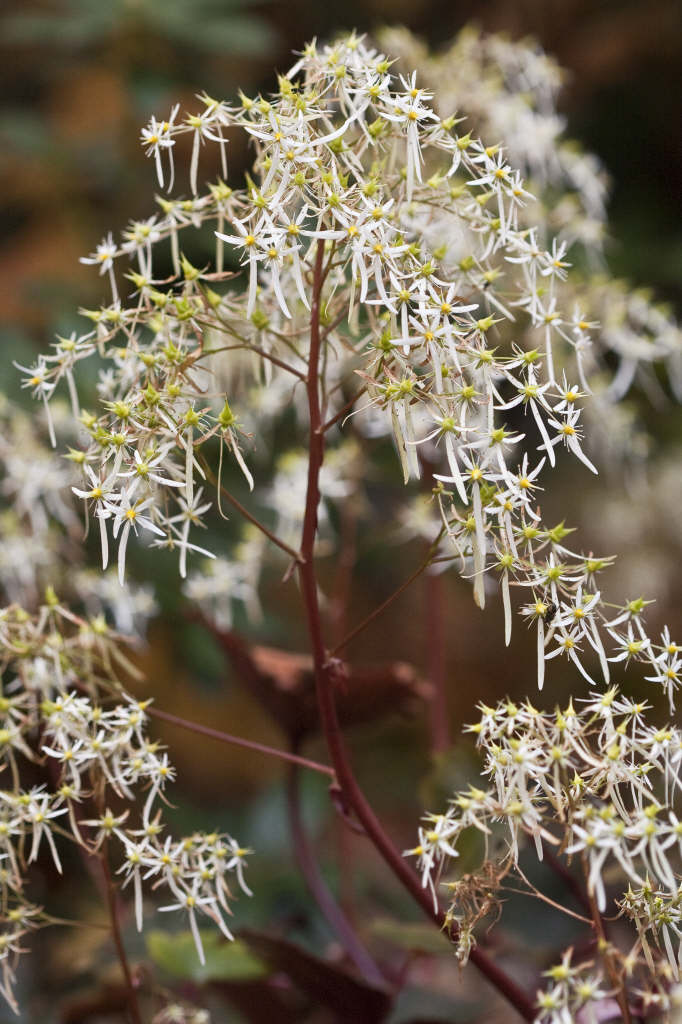Saxifraga 'Rubrifolia' (_fortunei_) (5)
saxifrage 'Rubrifolia'
A compact deciduous perennial to 20cm tall, with rounded, bluntly lobed and toothed, red-tinged leaves, wine-red beneath, and deep red stems bearing airy sprays of white flowers 1cm wide in late summer and autumn
Size
Ultimate height
0.1–0.5 metresTime to ultimate height
2–5 yearsUltimate spread
0.1–0.5 metresGrowing conditions
Moisture
Moist but well–drainedpH
Acid, NeutralColour & scent
| Stem | Flower | Foliage | Fruit | |
| Spring | Green Red | |||
|---|---|---|---|---|
| Summer | Red | White | Green Red | |
| Autumn | Red | White | Green Red | |
| Winter |
Position
- Full shade
- Partial shade
Aspect
North–facing or West–facing or East–facing
Exposure
Exposed or Sheltered Hardiness
H4Botanical details
- Family
- Saxifragaceae
- Native to GB / Ireland
- No
- Foliage
- Deciduous
- Habit
- Bushy
- Genus
Saxifraga can be annuals, biennials, evergreen or herbaceous perennials, mostly mat-forming in habit, with simple or palmately lobed leaves and starry or rounded flowers which may be solitary of in panicles or cymes
- Name status
Accepted
- Horticultural Group
- Irregulares section saxifrages are shade-tolerant, usually herbaceous perennials forming rosettes broad, palmately lobed leaves, with leafless stems bearing lax panicles of small flowers with short upper, and longer lower petals, in summer or autumn
How to grow
Cultivation
Grow in well-drained, moist, humus rich soil in deep or partial shade
Propagation
Propagate by seed in autumn in containers in an open frame. Individual rosettes can be detached in spring as root cuttings in late spring or early summer
Suggested planting locations and garden types
- Coastal
- Rock garden
- City and courtyard gardens
- Cottage and informal garden
- Patio and container plants
- Garden edging
- Flower borders and beds
Pruning
No pruning required
Pests
vine weevils may be a problem
Diseases
Generally disease-free
Get involved
The Royal Horticultural Society is the UK’s leading gardening charity. We aim to enrich everyone’s life through plants, and make the UK a greener and more beautiful place.
